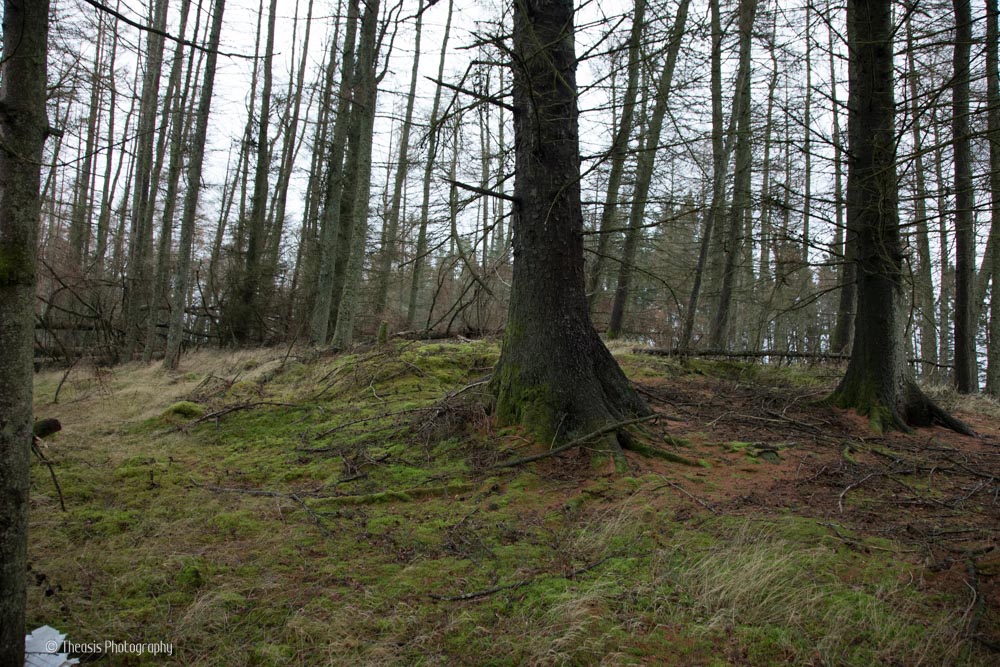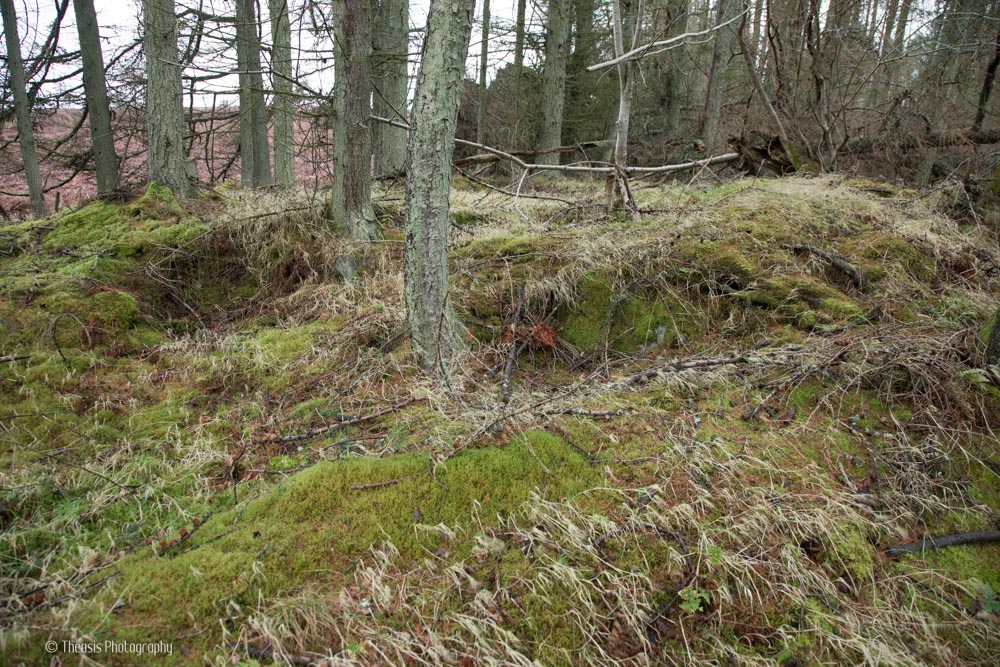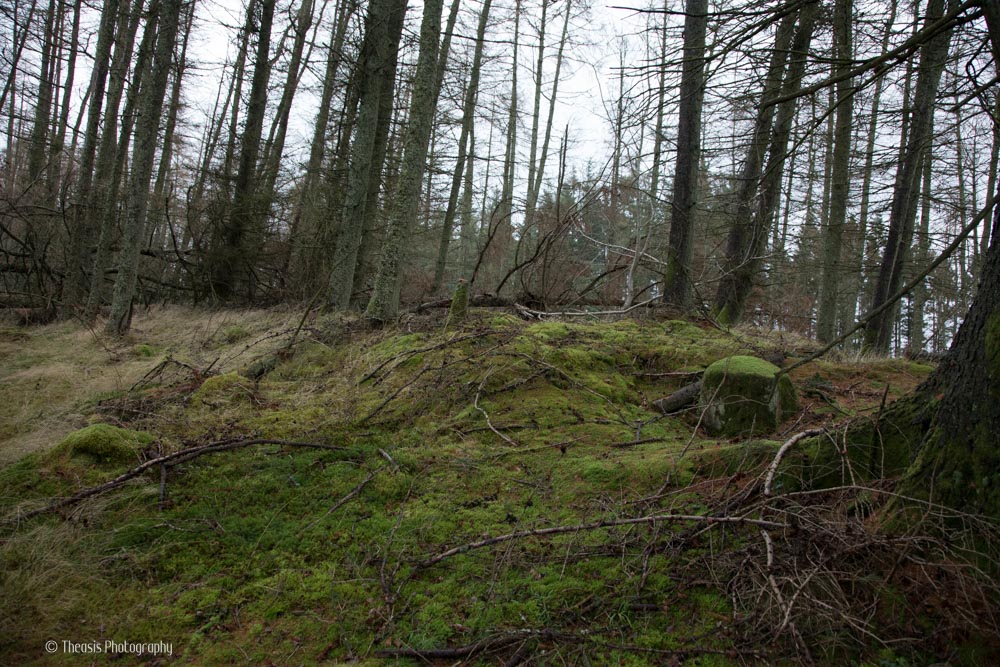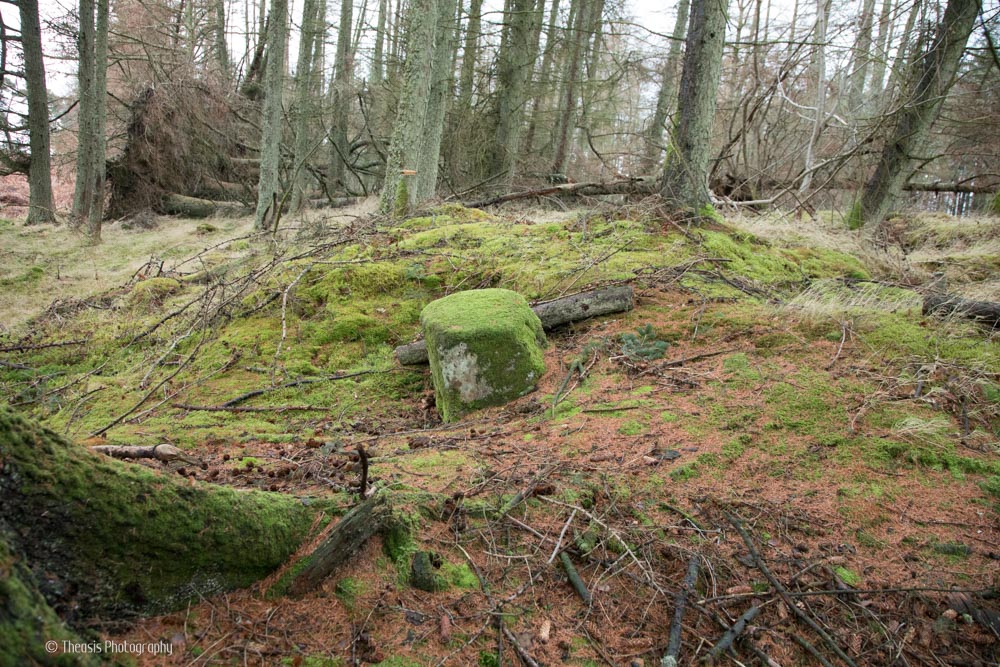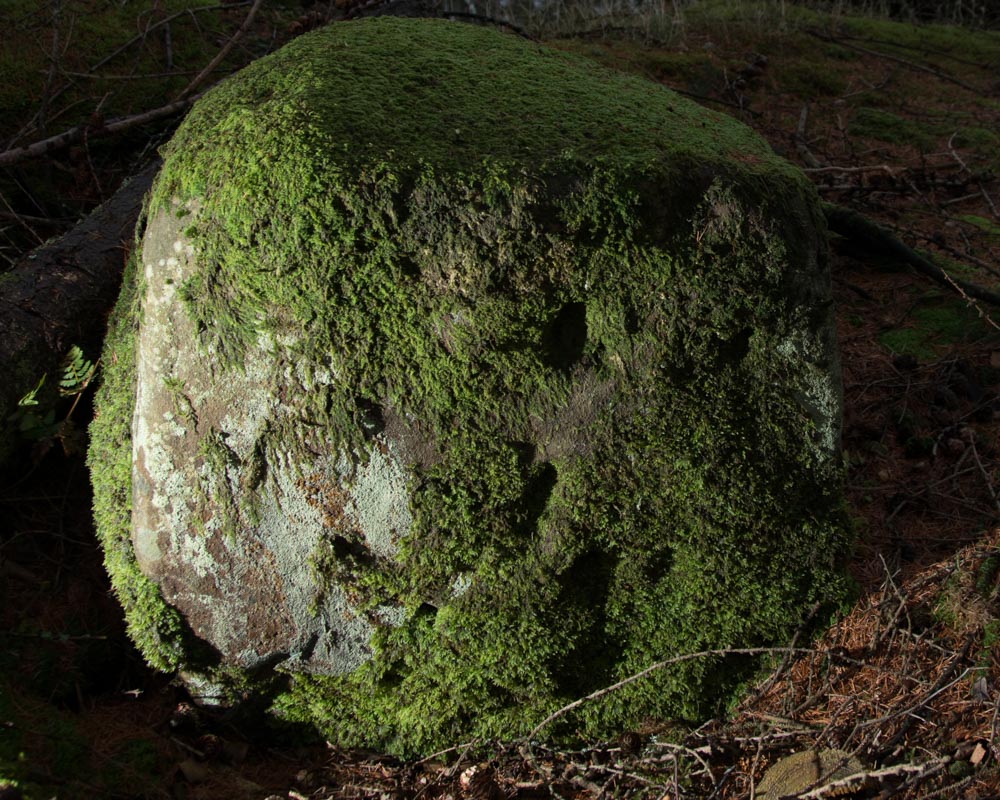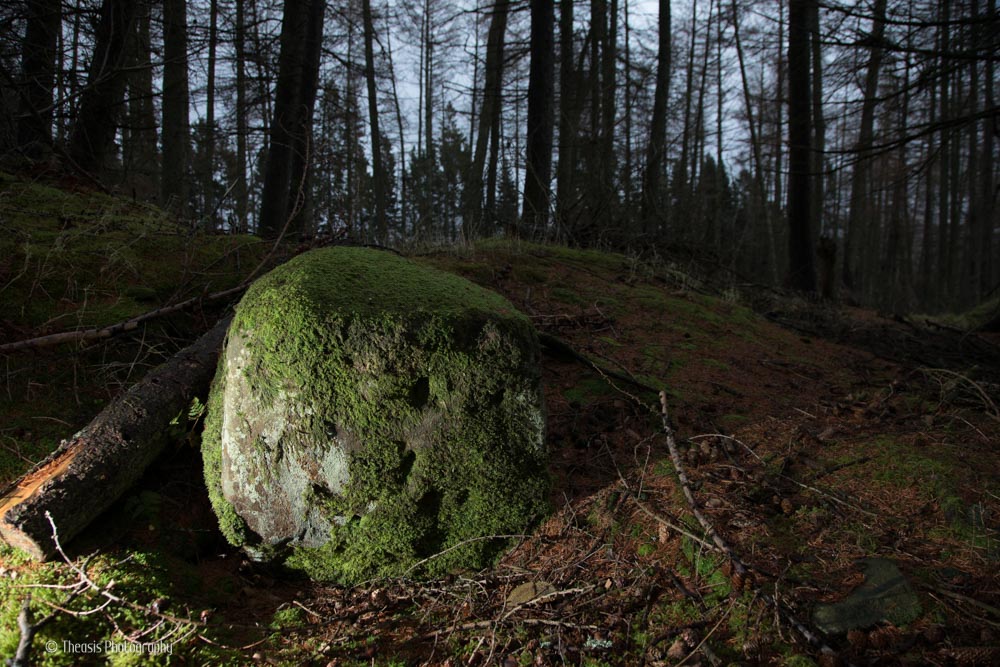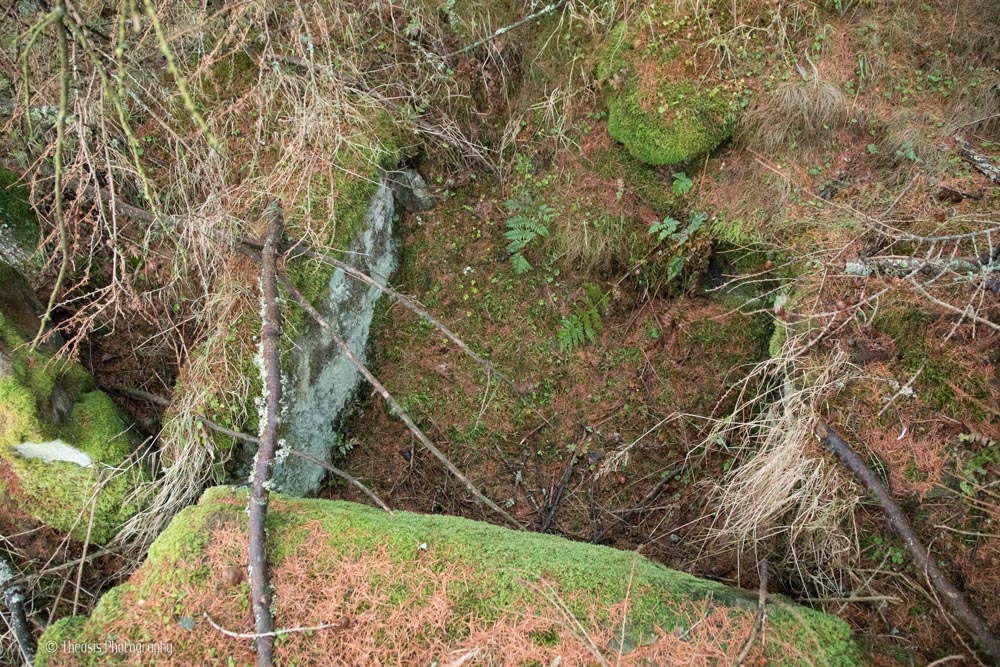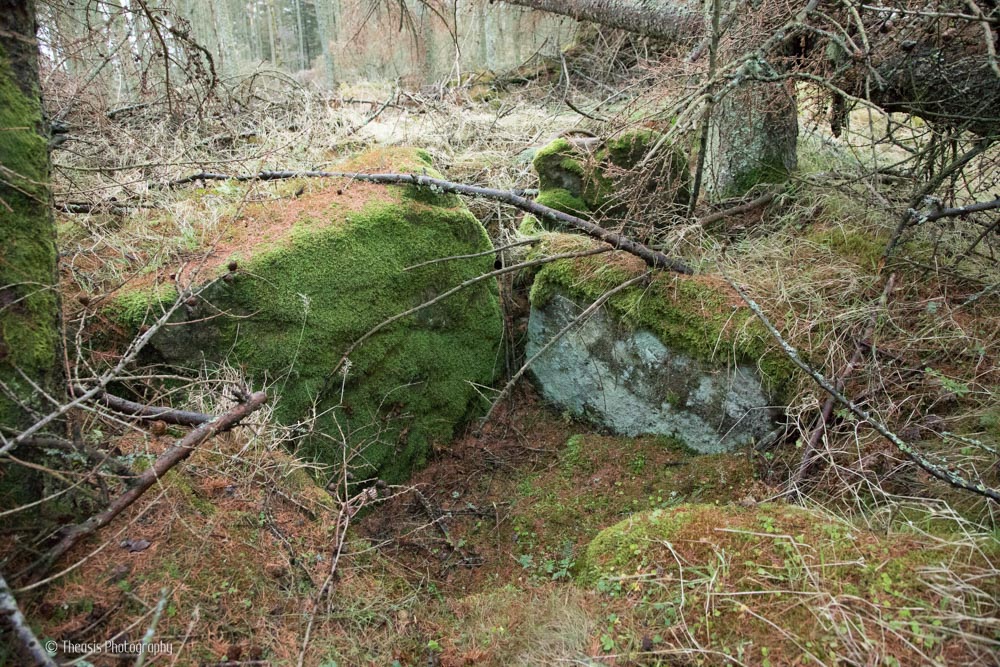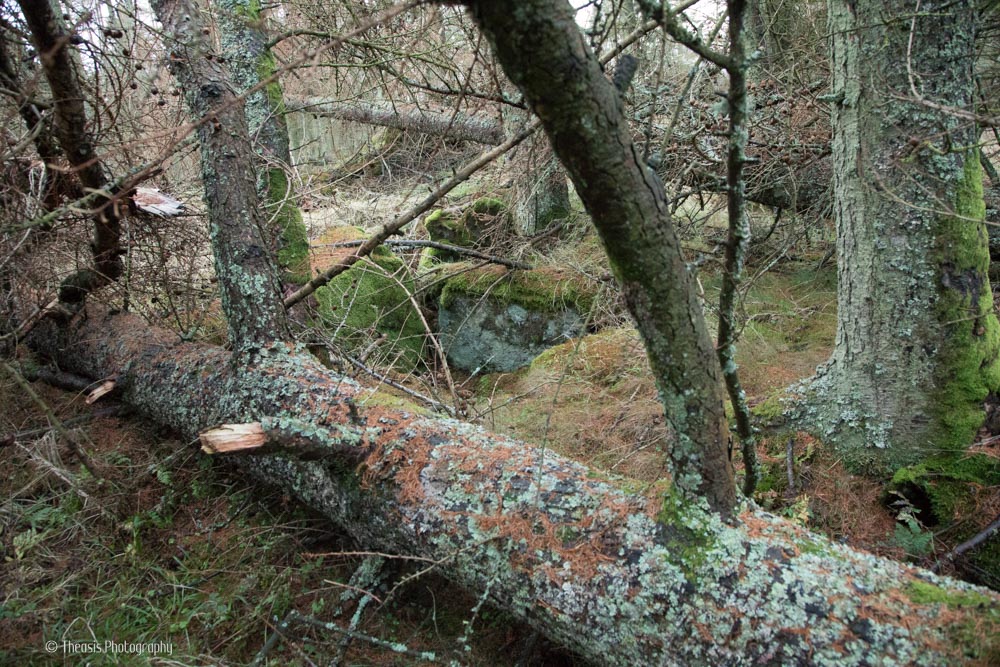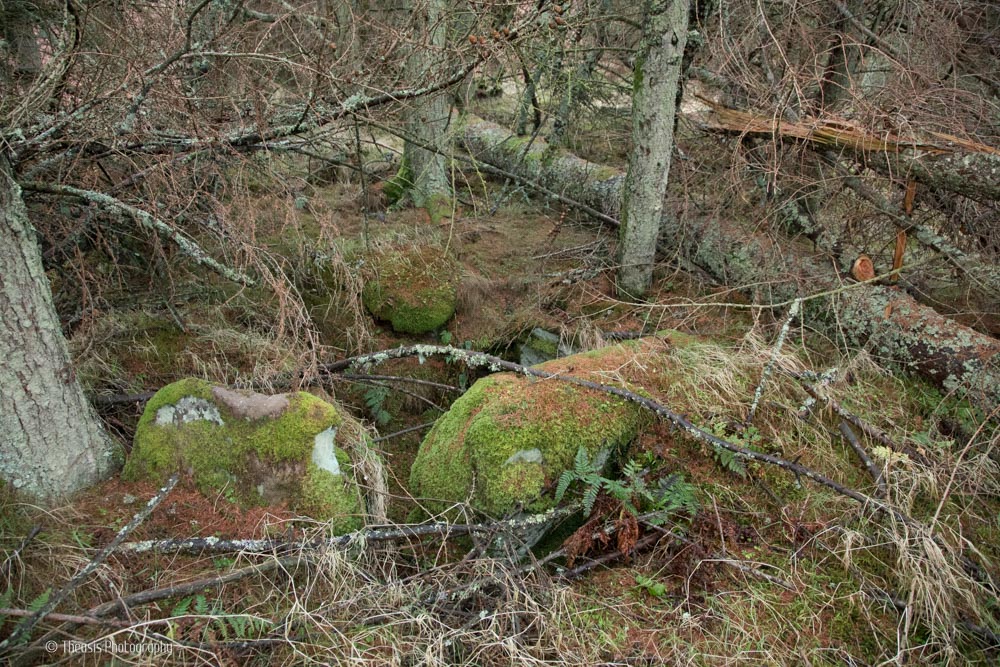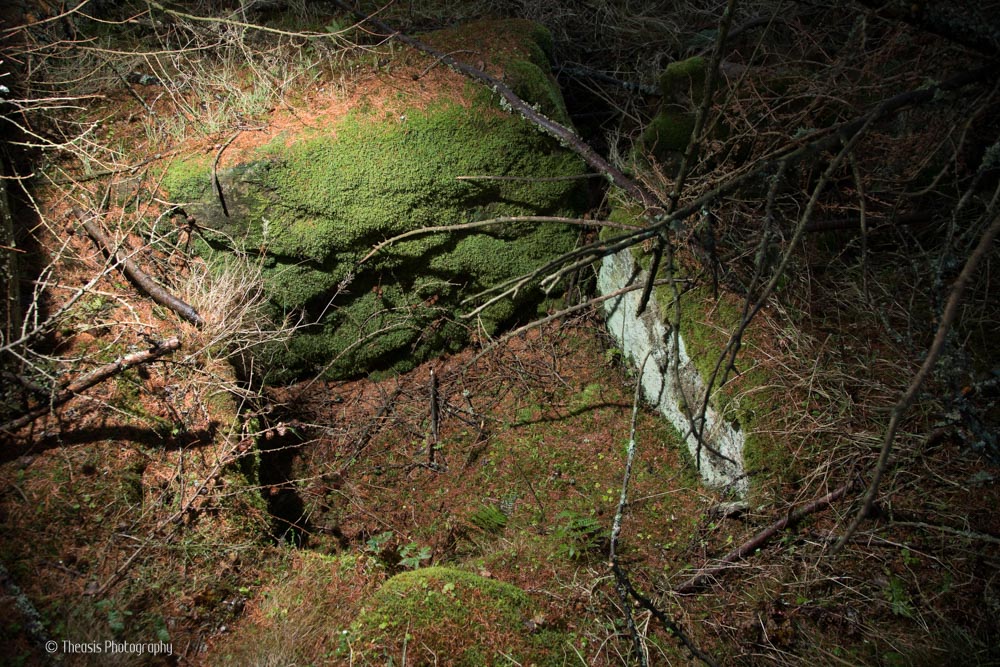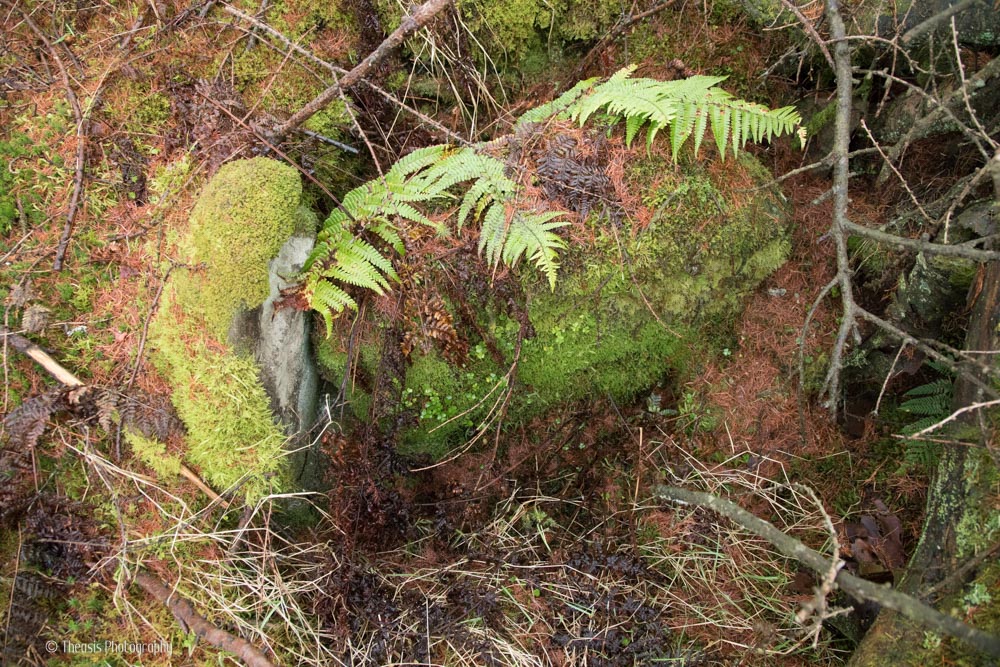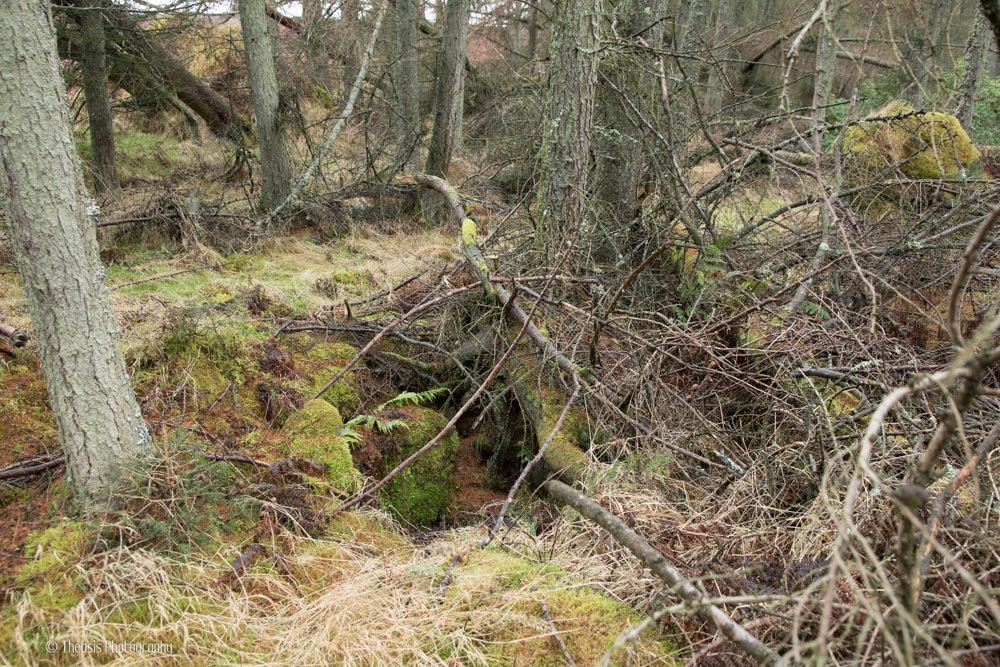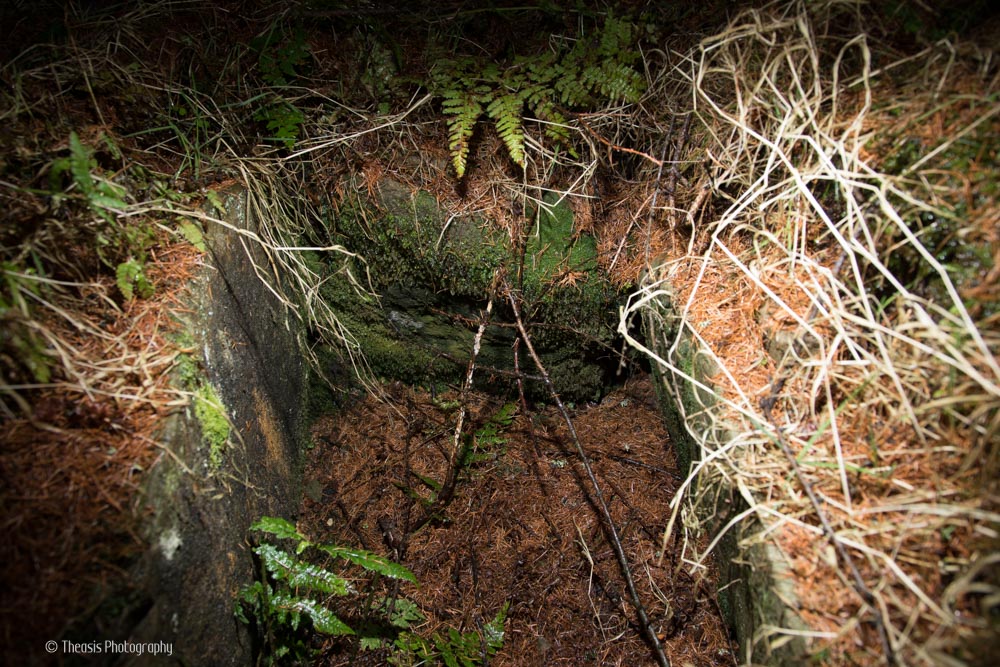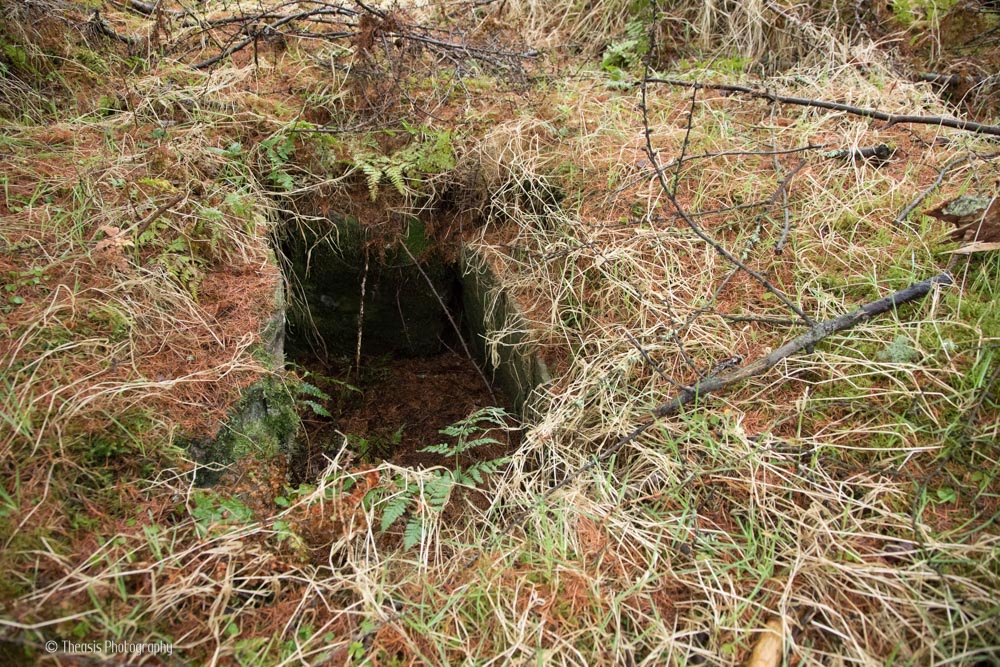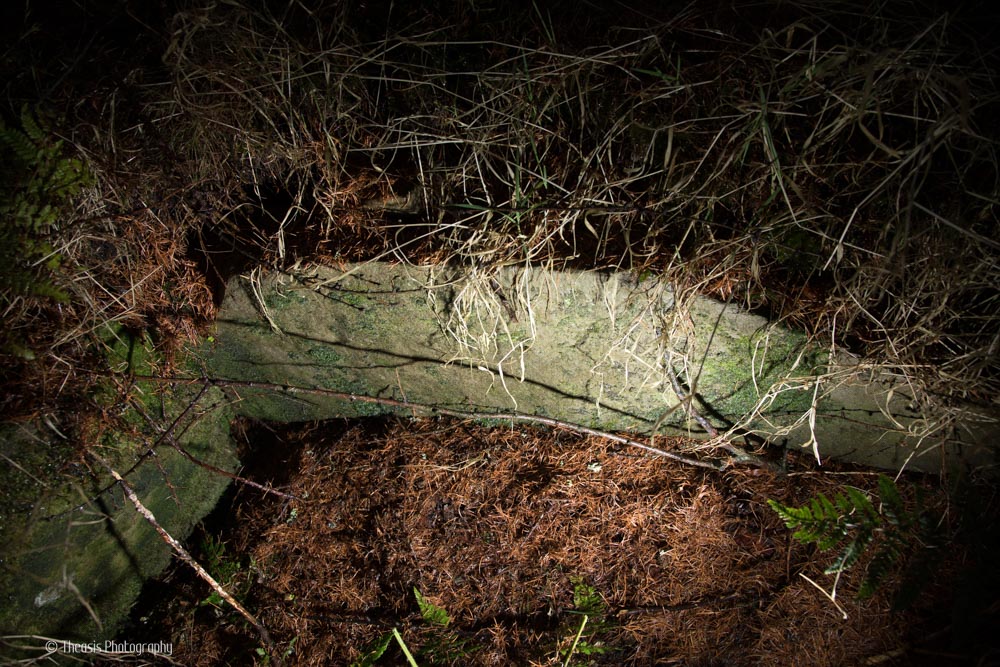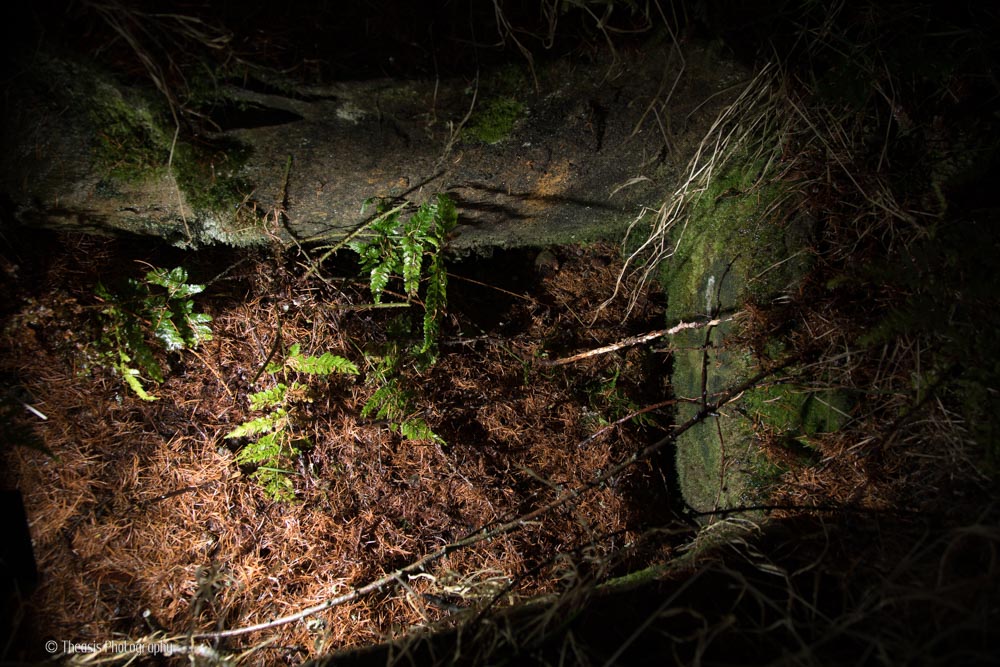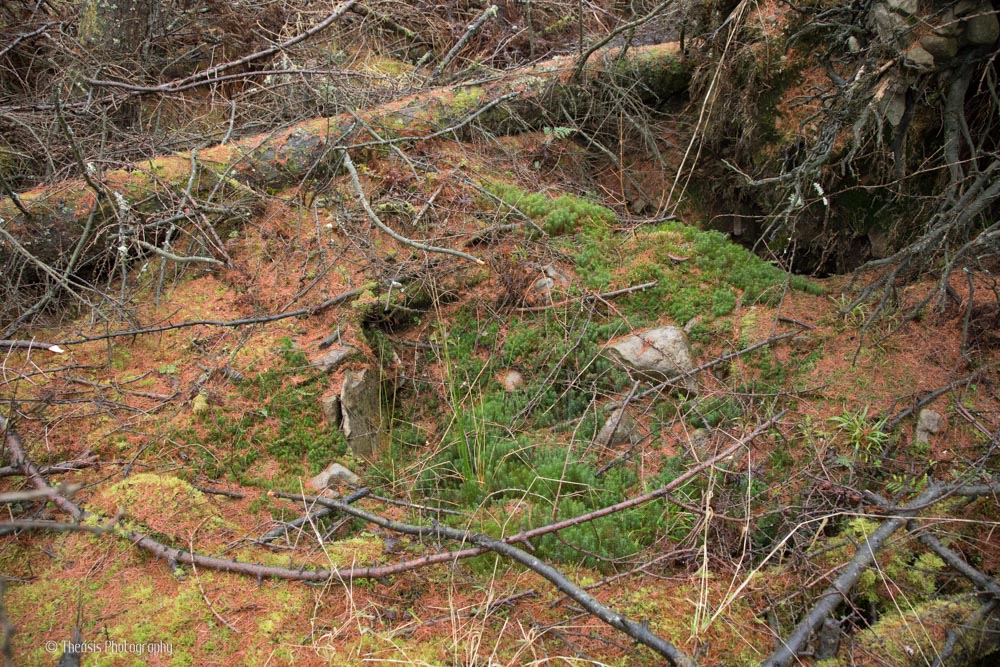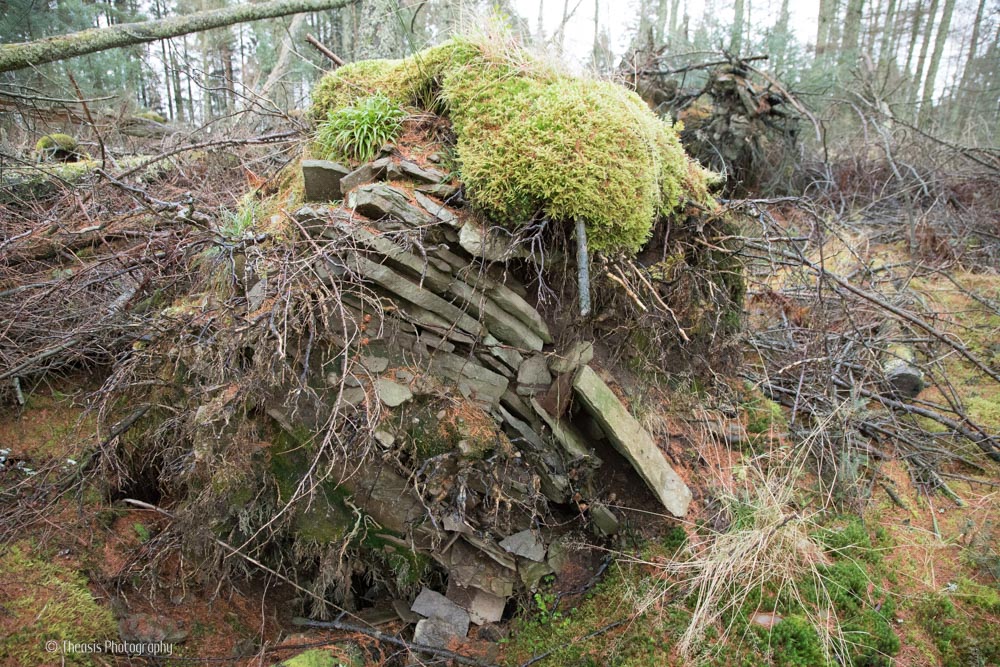This Clyde-Solway type long cairn is both easy to find and hard to see; it's right in the kink of a small L-shaped forestry plantation, but it's a low grassy mound and covered in both standing and storm-felled trees. And there is plenty of interest there.
There are a number of largish stones that were presumably once part of the facade. One large moss-covered boulder is decorated with eight clear circular cup marks on one face, and as many as ten more shallower depressions which may also be cup marks.
The main body of the cairn is reported to now be about 25 metres by 12 metres. There is a cutting along much of the length of the cairn, possibly from an "investigation" made around 1800. In this cutting you can see a number of chambers and burial kists.
Under some of the fallen trees where the roots have held the structure together, the layers of flagstones and rubble show up clearly.
